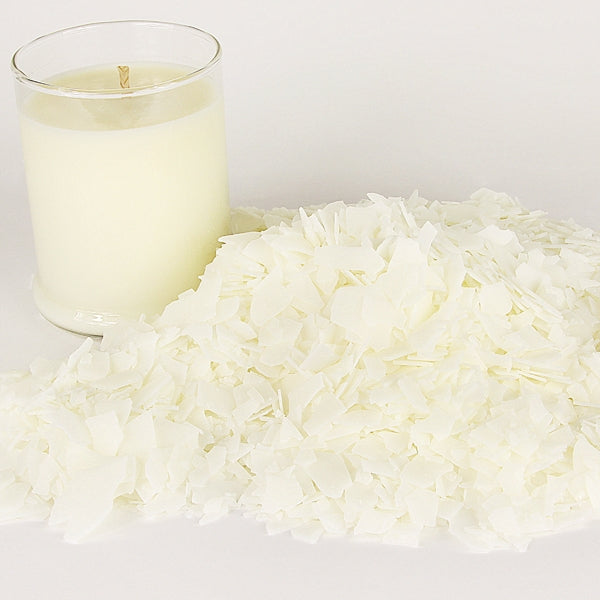Discover the Magic of Crystal Soy Candles and Home Fragrance
Wiki Article
From Wick to Wax: Recognizing the Chemistry Behind Soy Wax Candles and Their Environmental Effect
As we illuminate our areas with the warm radiance of candle lights, there lies a world of detailed chemistry behind the seemingly straightforward act of lighting a soy wax candle light. The selection in between soy and paraffin wax prolongs past mere appearances, diving into the realm of ecological effect and the extremely make-up of the materials. Recognizing the molecular framework of soy wax and its combustion process loses light on the exhausts released right into our surroundings. Join us as we untangle the scientific intricacies behind soy wax candles and explore their implications on our environment.Soy Wax Vs. Paraffin Wax
When comparing soy wax and paraffin wax for candle light making, it is necessary to recognize the distinctive attributes and advantages of each product. Soy wax is an all-natural, sustainable source originated from soybean oil, making it eco-friendly and biodegradable - crystal soy candles. On the other hand, paraffin wax is a by-product of petroleum refining, which increases concerns concerning its ecological effect and sustainabilitySoy wax candle lights shed cleaner and give off less soot contrasted to paraffin wax candle lights, making them a healthier selection for indoor air high quality. Additionally, soy wax has a lower melting factor, allowing for a longer-lasting candle light that distributes fragrance a lot more effectively. Paraffin wax, on the other hand, often tends to burn faster and much less easily, potentially launching unsafe chemicals right into the air.
From a sustainability point of view, soy wax is preferred for its biodegradability and sustainable sourcing, aligning with the expanding consumer preference for environmentally aware items. While paraffin wax has been a standard choice in candle light making due to its price and ease of usage, the change in the direction of environment-friendly choices like soy wax is getting energy in the market.
Chemical Make-up of Soy Wax

Combustion Refine in Soy Candles
The chemical make-up of soy wax directly affects the combustion procedure in soy candles, influencing aspects such as shed time, fragrance release, and environmental effect. When a soy candle light is lit, the warmth from the flame thaws the wax near the wick.
The combustion effectiveness of soy candle lights is influenced by the purity of the soy wax and the top quality of the wick. Furthermore, soy wax candle lights have a lower ecological effect compared to paraffin candles due to their sustainable and naturally degradable nature.

Environmental Advantages of Soy Wax

Taken into consideration a sustainable choice to traditional paraffin wax, soy wax uses notable environmental benefits that make it a popular selection among eco-conscious consumers. Soy wax burns cleaner and generates less soot than paraffin wax, contributing to far better interior air quality and reducing the requirement for cleansing and maintenance. Overall, the environmental advantages of soy wax align with the growing demand for green and sustainable products in the market.
Recycling and Disposal Considerations
Recycling and proper disposal of soy wax candles play an essential duty in keeping ecological sustainability and lowering waste in neighborhoods and households. When it comes to reusing soy wax candle lights, the first action is to make certain that the candle light has actually shed entirely.
In terms of disposal, if recycling is not an option, soy wax candles are naturally degradable and can be securely thrown away in many family waste systems. Nevertheless, it is always suggested to talk to regional recycling centers or waste monitoring solutions for specific standards on candle light disposal to make certain correct handling and environmental management.
Final Thought
In final thought, the chemistry behind soy wax candles reveals their environmental benefits over paraffin wax candles. Soy wax, derived from soybean oil, burns cleaner and produces less residue when contrasted to paraffin wax.When comparing soy wax and paraffin wax for candle making, it is essential to comprehend the unique characteristics and benefits of each material (candles).Soy wax candle lights shed cleaner and produce much less soot compared to paraffin wax candles, making them a healthier selection for interior air top quality.Considered a sustainable choice to traditional paraffin wax, soy wax supplies noteworthy environmental benefits that make it a popular selection amongst eco-conscious consumers. Soy wax burns cleaner and creates less soot than paraffin wax, contributing to better interior air quality and lowering the need for cleansing and maintenance.In conclusion, the chemistry behind soy wax candles exposes their ecological advantages over paraffin wax candle lights
Report this wiki page